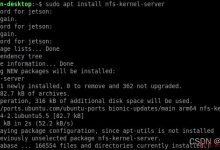借用别人的一句话:
说到文件 IO 编程,那当然首先要来谈一谈在 Linux 操作系统里,什么是文
件?记得以前说过,在 Linux 中,几乎一切都可以看做是文件。串口、打印机、
硬盘等设备都可以看做是文件,学过驱动的应该都知道/dev/xxx 都是设备文件。
大多数情况下,这些文件都会涉及的函数接口一般有以下 5 个,open,
read,write,ioctl,close。有人也许会说,目录也是文件吗?没错,目录在 Linux 环
境下确实是一个文件,只不过打开目录文件,用的函数不再是 open/read 而是
opendir/readdir 接口来读取目录。另外,应用程序工程师不必了解上面提到的系
统接口函数是如何实现的。总结一下:Linux 中的文件主要分为 4 种:普通文件、
目录文件、链接文件和设备文件。
#include<sys/types.h>#include<sys/stat.h>#include<fcntl.h>#include <unistd.h>#include<stdio.h>#include <stdlib.h>#include <string.h>int main(int argc ,char **argv){int fd,size;char *buf = \"hello,I\'m Webee,This is file io test!\";char buf_r[20];int len = strlen(buf);/* 首先调用 open 函数,如果当前目录下没有 hello.c 则创建* 以读写方式打开文件,并指定权限为可读可写*/if((fd = open(\"./hello.c\",O_CREAT | O_TRUNC | O_RDWR,0666))<0){/* 错误处理 */printf(\"open fail\\n\");exit(1);}elseprintf(\"open file:hello.c fd = %d\\n\",fd);/* 调用 write 函数,将 buf 中的内容写入 hello.c */if((size = write(fd,buf,len) ) < 0){printf(\"write fail\\n\");exit(1);}elseprintf(\"write: %s\\n\",buf);printf(\"len is %d \",len);/* 调用 lseek 函数将文件指针移到文件起始位置,并读出文件中的 15 个字节 */lseek(fd,0,SEEK_SET);if((size = read(fd,buf_r,15)) <0){printf(\"read fail\\n\");exit(1);}else{buf_r[15] = \'\\0\';printf(\"read from hello.c and the content is %s\\n\",buf_r);}/* 最后调用 close 函数关闭打开的文件 */if(close(fd) < 0){printf(\"close fail\\n\");exit(1);}elseprintf(\"close hello.c\\n\");return 0;}
 爱站程序员基地
爱站程序员基地


